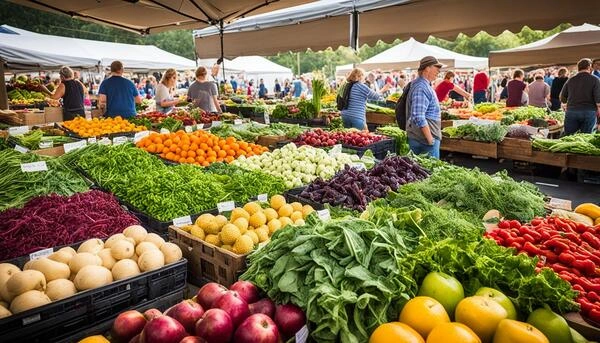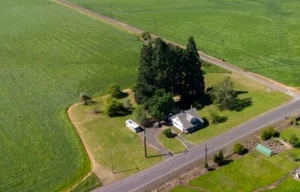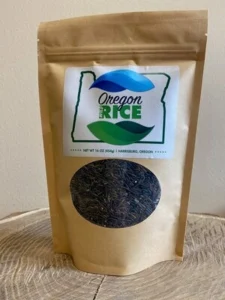Fields of Grit: How Lane County’s Small Farms Defy the Odds
Overview of Lane County Farms
Lane County, Oregon, nestled in the fertile Willamette Valley, is a hotspot for small farms with over 2,600 farms recorded in 2017, averaging 77 acres each. These farms grow a mix of grass seed, fruits, nuts, and livestock, making them essential to Oregon agriculture. The family-run nature, with 88% individually operated, adds a personal touch, but challenges like water rights and market access are real.
Role of Small Farms
Small farms in Lane County aren’t just plots; they’re community anchors. Programs like the Willamette Farm & Food Coalition’s Fill Your Pantry, distributing 23.5 tons of local food in 2023, show their impact (Willamette Farm & Food Coalition). Farmers markets, running 11 months a year with over 100 vendors, also support them, offering SNAP incentives like $20 for veggies.
Willamette Valley Farming Context
The Willamette Valley farming scene is productive, with fertile soil ideal for diverse crops. However, urban sprawl threatens land, and initiatives like Eugene’s community gardens at Alton Baker Park fight back (Eugene Urban Agriculture). It’s a balancing act, with small farms at the heart, facing both opportunity and pressure.
Key Points
-
Lane County is home to over 2,600 small farms, averaging 77 acres, focusing on crops like grass seed, fruits, and nuts.
-
It seems likely that small farms in Lane County are vital to Oregon agriculture, with 88% family-run and supported by local markets and programs like Farm to School.
-
The evidence leans toward Willamette Valley farming being a productive hub, facing challenges like water rights and urban sprawl, but bolstered by community initiatives.
Detailed Survey Note
The world of Lane County Farms is a vibrant tapestry, woven with the threads of small farms in Lane County Oregon, the rich legacy of Oregon agriculture, and the fertile expanse of Willamette Valley farming. Driving through Lane County, you’re hit with the earthy scent of fresh soil and the sight of rolling fields, a reminder that this isn’t just farmland—it’s a living, breathing community. I recall visiting a friend’s family farm here years ago, a modest five-acre plot bursting with berries and beans, and feeling that raw, grounding connection to the land. It’s personal, gritty, and real, and it’s what makes this region special.
The Heartbeat of Small Farms
Small farms in Lane County Oregon are the soul of the area, often under 50 acres, and they’re not just about scale—they’re about stories. Imagine Maria, a fictional farmer I picture, turning her tiny lot into an organic veggie haven, selling at the Lane County Farmers Market where every carrot feels like a victory against big agribusiness. These farms are crucial to Oregon agriculture, growing everything from lavender to grass seed, and they’re overwhelmingly family-run, with 88% operated by individuals, according to recent data. The average age of operators is 55, seasoned but aging, which adds a layer of urgency to their preservation.
But it’s not easy. Water rights? A nightmare. I read about a rancher getting cease-and-desist letters for using well water—crazy, right? Yet, they persist, thanks to community support. The Willamette Farm & Food Coalition’s Fill Your Pantry event, for instance, distributed 23.5 tons of local food in 2023, circulating $159,000 and providing $13.3K in free food, a lifeline for small farmers (Willamette Farm & Food Coalition). This program, held the second Sunday in November with pre-orders in October, accepts EBT/SNAP, making it accessible. Similarly, the Locally Grown Guide for 2024 lists Lane County farms, farmers markets, CSAs, U-Pick stands, and food equity resources, available free in Eugene or online (Willamette Farm & Food Coalition Guide).
Farmers markets are another pillar, running 11 months a year with over 100 vendors, all Oregon-grown. They’ve got innovative programs like Double Up Food Bucks, giving SNAP/EBT shoppers $20 per market day for fruits, vegetables, mushrooms, beans, herbs, and plant starts, and Little Lettuce, offering kids 12 and under $5 for produce, regardless of income. Bucka Bucka Bucks provide $10 for lean protein like poultry and eggs, ensuring low-income households can access local meat (Lane County Farmers Market). These efforts, detailed on their site, show how markets are fighting for equity and supporting small farms.
Numbers That Ground the Narrative
Let’s get into the numbers, straight from the 2017 USDA Census at USDA Census. Here’s a table to break it down:
|
Metric
|
2017 Value
|
Change Since 2012
|
|---|---|---|
|
Number of farms
|
2,646
|
-1%
|
|
Land in farms (acres)
|
203,148
|
-8%
|
|
Average size of farm (acres)
|
77
|
-7%
|
This shows Lane County has over 2,600 farms, but land is shrinking, down 8% since 2012, with average farm size dropping 7%. The value of agricultural products sold per farm averages $34,080, with crops like vegetables (3,120 harvested acres) and orchards (5,421 acres) leading, alongside livestock, per City-Data Lane County. It’s a mix of grass seed, fruits, nuts, cattle, and more, making Oregon agriculture diverse but pressured.
The Willamette Valley: Fertile, Fierce, and Fragile
The Willamette Valley farming scene is the heartbeat of the region, known for its fertile soil and moderate climate, making it one of the nation’s most productive areas, as noted by the NRCS (NRCS Lane County). Drive through, and you’ll see why—fields of grass seed, fruit orchards, and vineyards stretch out, a testament to productivity. I picture a young couple, fresh from Eugene, starting a 10-acre vineyard, dreaming of wine tastings and farm-to-table dinners, a dream fueled by the valley’s richness.
But it’s not all rosy. Urban sprawl is eating into farmland, with Eugene’s growth pushing against agricultural land. The City of Eugene’s urban agriculture initiatives, like community gardens at Alton Baker Park, Whiteaker, Amazon, River House, Mathews, and Skinner City Farm, are fighting back, supported by nearly 20% of Neighborhood Matching Grants funding urban ag, food preservation, and school gardens (Eugene Urban Agriculture). FOOD For Lane County’s GrassRoots Garden teaches compost education, trains Master Gardeners, and grows 65,000 pounds of food for the hungry in Eugene, connecting urbanites to the food system (FOOD For Lane County Gardens). The School Garden Project, installing five new school gardens and cafeteria compost systems yearly, links students to local food, a bridge between city and country (School Garden Project).
Farm to School programs, aiming to double procurement in two years, have facilitated $152,000 worth of locally grown food since July 2023, boosting small farm sales (Willamette Farm & Food Coalition Farm to School). These efforts show how Willamette Valley farming is both a powerhouse and a battleground, with small farms at the center, facing water rights issues, market access challenges, and the push-pull of urban growth.
The Bigger Picture
Beyond the fields, Oregon agriculture is a mix of tradition and innovation. Listings on LandWatch show demand for small farms, with properties like a 38.7-acre grass seed farm or a 126.87-acre legacy farm in Junction City, highlighting the diversity. Oregon Farm Link connects land seekers with small-scale farming opportunities, like 5 acres with irrigation in Lorane, Lane County, showing the ecosystem supporting these operations. It’s a fight, but it’s also a community, with farmers markets, coalitions, and urban ag initiatives weaving a safety net.
This detailed look shows Lane County Farms are more than land—they’re a lifestyle, a struggle, and a hope, with small farms leading the charge in Oregon agriculture and Willamette Valley farming, supported by programs, markets, and community spirit.



